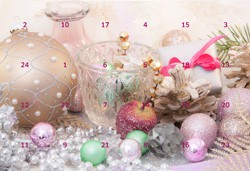A millenary tradition
In Italian lore, on January 6th, the Befana comes by night in broken shoes and patches on her dress and apron, flying on a broom to deliver gifts to children. This beloved figure is connected with the Epiphany and is regarded similarly to St. Nicolas and his connection with the birth of Christ. Epiphany is a Christian celebration with the Divinity story of the three kings visiting Jesus in Bethlehem, and John the Baptist, baptising him, at its centre. The Italians include the Befana in nursery rhymes and songs that, have spread through the centuries. the Befana is a millenary tradition that brings with it a magical allure and has no sign of disappearing.
The legend
Many attribute the birth of the legend to Christian tradition, but it seems that the Befana goes back to more ancient times than the Epiphany feast from which it takes its name. Its origin almost lost in the mists of time combines elements from Pagan, and other pre-Christian elements, which explains the bonfires and burning of the Befana’s effigy in some regions of Italy. Through time she has become a melded symbol of the celebrations surrounding the Chrisitan Deity and the Pagan and Druid traditions of the burning of the old year, and birthing of the new.
Epiphany originated from the story of the visit of the Magi to the baby Jesus in Bethlehem to honour the newly born with gifts. And this date is, however, recognized as a national festivities, in many countries as Three Kings Day. The figure of the Befana is another thing. There are numerous sources that are attributed to the folk legend.
Some historians believe that the Epiphany actually originates from the Celtic peoples, who settled the Po valley in Italy and part of the Alps. The Celtic people celebrated rites officiated by the Druids, including burning wicker forms to honour various deities and rituals.
Others believe that the witch was part of the Christian three kings’ story. In the search for the Christ child, the kings asked an old local woman for help, encouraging her to join their caravan. She refused. Then later out of repentance, the old woman prepared a basket of sweets and goodies. She travelled from house to house giving sweets to children hoping that one of them would turn out to be the baby Jesus. Since then the witch has been riding on her broom, flying over the rooftops of the world, leaving sweets for the children.
Her image is always the same: a wide dark skirt with an apron, big pockets and colour patches, and a shawl that wraps around the head and shoulders, or at other times, a handkerchief or a hat with a wide brim and finally the threadbare slippers.
Tradition has it that the night between the 5th and 6th of January the Befana flies by broom, to each and every chimney all over the world, distributing sweets and delicacies to good children, and coal to bad children. All of the children of the world eagerly await the sweet surprises they will receive.
The Twelfth night
The pre-Christian Pagan deity of Mother Nature appears on the twelfth night after the winter solstice, and then on January 6th. An exhausted Mother Nature appears in the guise of an old benevolent witch, flying over the skies with the broom, but now she is dry and made of dead wood, ready to be burned and reborn in the form of a New Mother Nature and the new agricultural season. The icon however distributed seeds that would be planted and harvested in the new year, instead of sweets. Even today, in many regions of Italy, purification rites are performed in hopes of a good planting season.
The Epiphany celebration around the world
In Rome, January 6 there is the famous celebration in Piazza Navona: Epiphany feast with food and gift stands and entertainment for the children through the day and night. In Venice, however, the Epiphany is celebrated in a very different way with a special celebratory race along the canals.
January 6 is celebrated in many places, but not everywhere. In Spain, for example, in Malaga, the Magi parade accompanied by several bands and the previous day food and water is left in front of the door, because the imagination of children, the Kings camels are thirsty and hungry. Epiphany in Bulgaria ends with a bath in the frigid Black Sea.
In Ethiopia and Peru, there are very folkloric events. The French prepare two types of Kings day cake. A bean is planted in the cakes. Whoever finds the bean is crowned king or queen of the party.
Iceland, as well as being a distant country, is the country where the traditions of Christmas seem to be part of the fabric of life and where this tradition is particularly curious. Celebrated from January 6th to the 13th. Christmas is celebrated from December 11 through December 24, where each day brings a visit from an individual St. Nicolas. Then from December 25, every day, one of them departs, until January 6th, when the last Santa Claus departs. All say goodbye to the Christmas season with a torchlight procession, which, according to tradition, is attended as well by the King and the Queen of the elves, ending with bonfires and fireworks.
Who among us has not received a stocking full of goodies and treats or charcoal? Your stocking this year could be valuable, with a small Jewel stuffed inside…? Have you been naughty or nice? Will you be receiving any Diamonds for Christmas or any other gemstone jewellery?
copy-edit & translation by- Sudan Edwina Young






